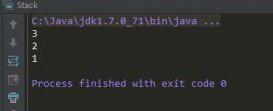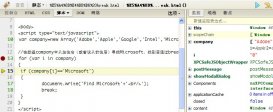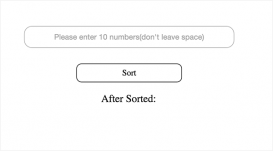读取Java文件到byte数组的三种方法(总结)
|
1
2
3
4
5
6
7
8
9
10
11
12
13
14
15
16
17
18
19
20
21
22
23
24
25
26
27
28
29
30
31
32
33
34
35
36
37
38
39
40
41
42
43
44
45
46
47
48
49
50
51
52
53
54
55
56
57
58
59
60
61
62
63
64
65
66
67
68
69
70
71
72
73
74
75
76
77
78
79
80
81
82
83
84
85
86
87
88
89
90
91
92
93
94
95
96
97
98
99
100
101
102
103
104
105
106
107
108
109
110
111
112
113
114
115
116
117
118
119
120
121
122
123
124
125
126
127
128
129
130
131
132
133
134
135
136
137
138
139
140
141
142
143
144
145
146
147
148
149
150
151
152
|
package zs;import java.io.BufferedInputStream;import java.io.ByteArrayOutputStream;import java.io.File;import java.io.FileInputStream;import java.io.FileNotFoundException;import java.io.IOException;import java.io.RandomAccessFile;import java.nio.ByteBuffer;import java.nio.MappedByteBuffer;import java.nio.channels.FileChannel;import java.nio.channels.FileChannel.MapMode;public class FileUtils { public byte[] getContent(String filePath) throws IOException { File file = new File(filePath); long fileSize = file.length(); if (fileSize > Integer.MAX_VALUE) { System.out.println("file too big..."); return null; } FileInputStream fi = new FileInputStream(file); byte[] buffer = new byte[(int) fileSize]; int offset = 0; int numRead = 0; while (offset < buffer.length && (numRead = fi.read(buffer, offset, buffer.length - offset)) >= 0) { offset += numRead; } // 确保所有数据均被读取 if (offset != buffer.length) { throw new IOException("Could not completely read file " + file.getName()); } fi.close(); return buffer; } /** * the traditional io way * * @param filename * @return * @throws IOException */ public static byte[] toByteArray(String filename) throws IOException { File f = new File(filename); if (!f.exists()) { throw new FileNotFoundException(filename); } ByteArrayOutputStream bos = new ByteArrayOutputStream((int) f.length()); BufferedInputStream in = null; try { in = new BufferedInputStream(new FileInputStream(f)); int buf_size = 1024; byte[] buffer = new byte[buf_size]; int len = 0; while (-1 != (len = in.read(buffer, 0, buf_size))) { bos.write(buffer, 0, len); } return bos.toByteArray(); } catch (IOException e) { e.printStackTrace(); throw e; } finally { try { in.close(); } catch (IOException e) { e.printStackTrace(); } bos.close(); } } /** * NIO way * * @param filename * @return * @throws IOException */ public static byte[] toByteArray2(String filename) throws IOException { File f = new File(filename); if (!f.exists()) { throw new FileNotFoundException(filename); } FileChannel channel = null; FileInputStream fs = null; try { fs = new FileInputStream(f); channel = fs.getChannel(); ByteBuffer byteBuffer = ByteBuffer.allocate((int) channel.size()); while ((channel.read(byteBuffer)) > 0) { // do nothing // System.out.println("reading"); } return byteBuffer.array(); } catch (IOException e) { e.printStackTrace(); throw e; } finally { try { channel.close(); } catch (IOException e) { e.printStackTrace(); } try { fs.close(); } catch (IOException e) { e.printStackTrace(); } } } /** * Mapped File way MappedByteBuffer 可以在处理大文件时,提升性能 * * @param filename * @return * @throws IOException */ public static byte[] toByteArray3(String filename) throws IOException { FileChannel fc = null; try { fc = new RandomAccessFile(filename, "r").getChannel(); MappedByteBuffer byteBuffer = fc.map(MapMode.READ_ONLY, 0, fc.size()).load(); System.out.println(byteBuffer.isLoaded()); byte[] result = new byte[(int) fc.size()]; if (byteBuffer.remaining() > 0) { // System.out.println("remain"); byteBuffer.get(result, 0, byteBuffer.remaining()); } return result; } catch (IOException e) { e.printStackTrace(); throw e; } finally { try { fc.close(); } catch (IOException e) { e.printStackTrace(); } } }} |
以上这篇读取Java文件到byte数组的三种方法(总结)就是小编分享给大家的全部内容了,希望能给大家一个参考,也希望大家多多支持服务器之家。














